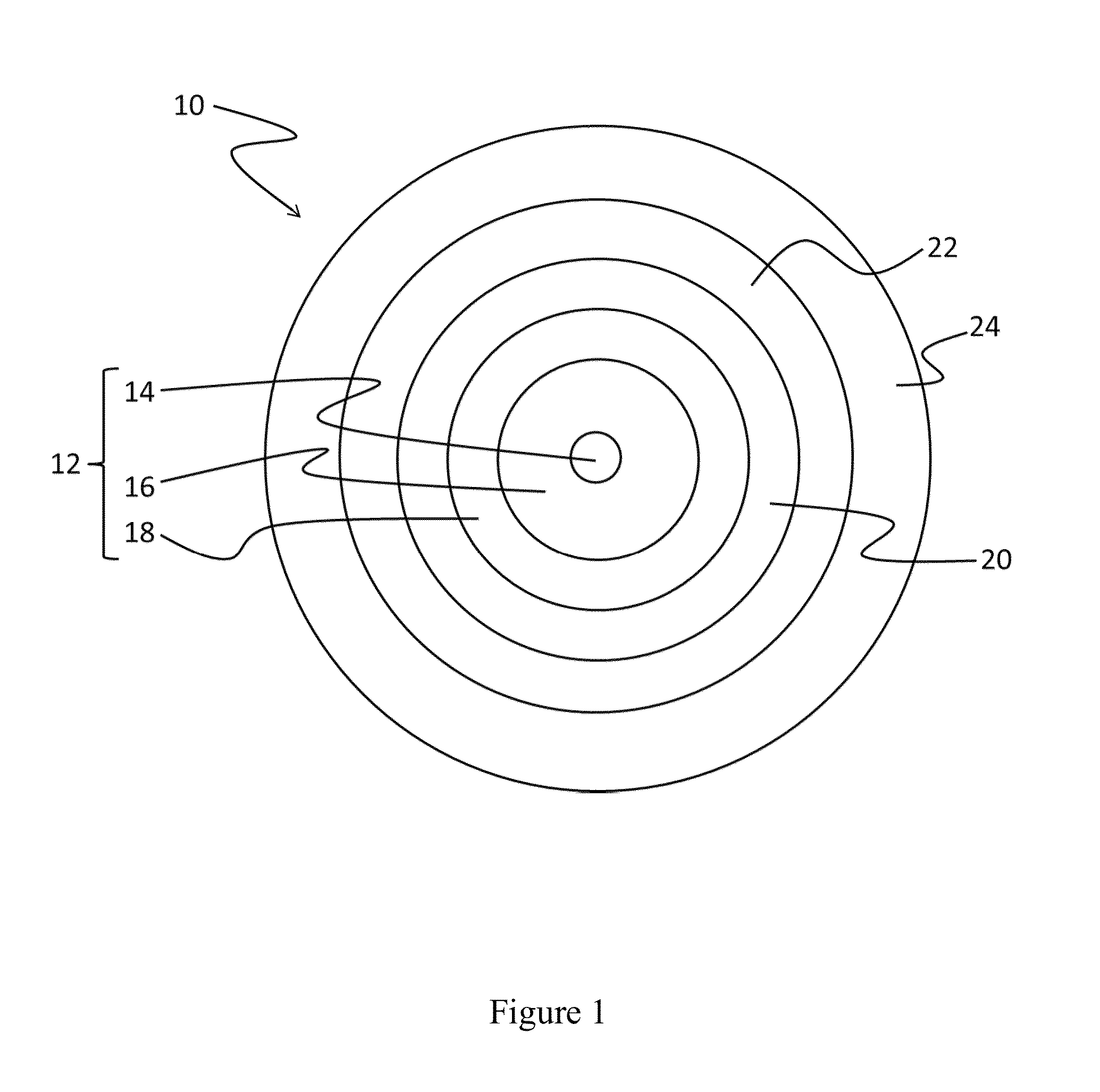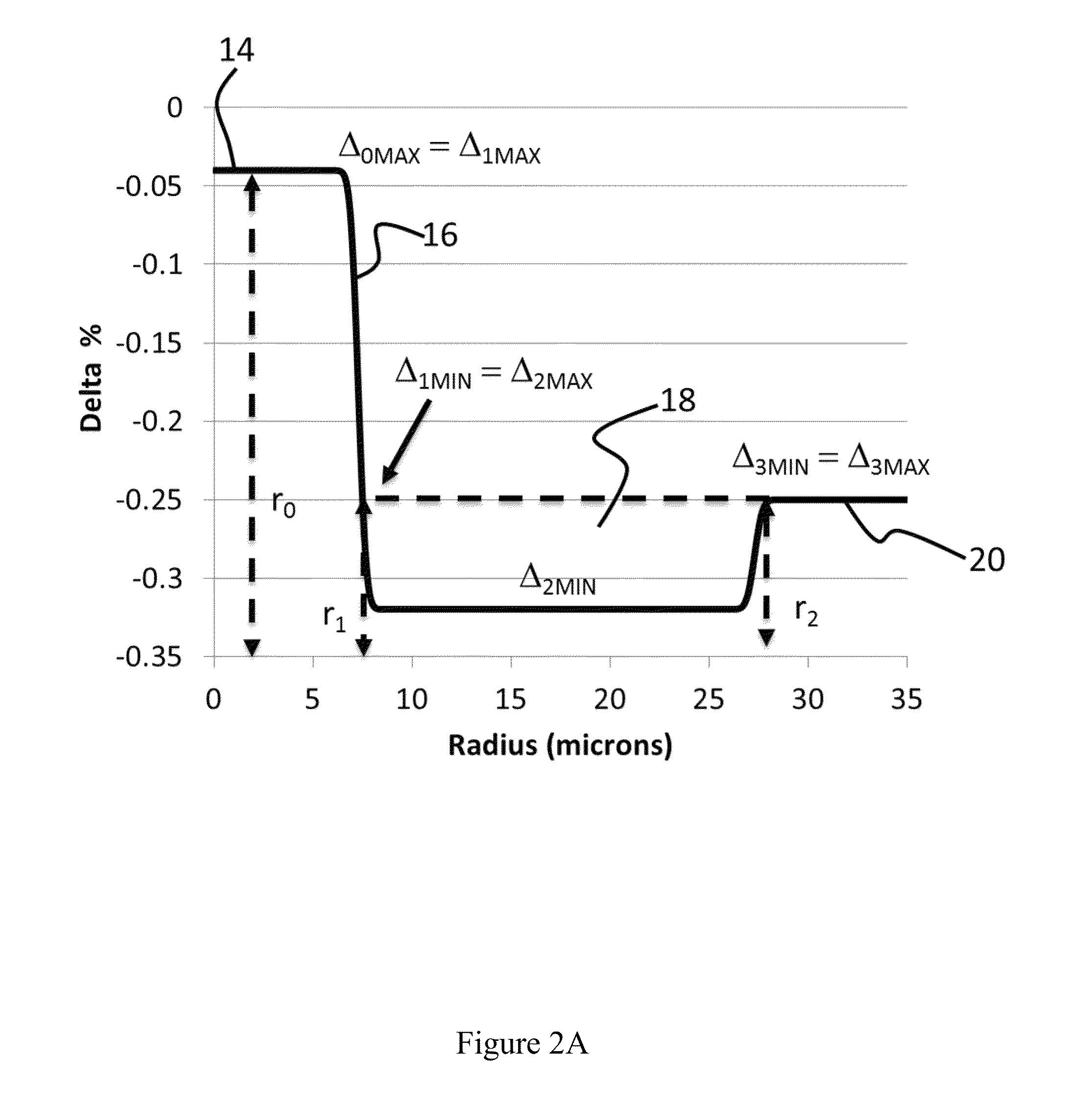Large effective area fiber with low bending losses
a technology of optical fibers and effective areas, applied in the field of optical fibers, can solve the problems of reducing the service life of optical fibers, and reducing the service life of optical fibers, and achieve the effect of large effective area and low bending losses
- Summary
- Abstract
- Description
- Claims
- Application Information
AI Technical Summary
Benefits of technology
Problems solved by technology
Method used
Image
Examples
examples
[0125]Representative fibers in accordance with the present disclosure were fabricated and tested to demonstrate selected advantages thereof. The fibers are of the type depicted in FIG. 1 and included a central core region with radius r0 and refractive index percent profile Δ0, a first core region with outer radius r1 and refractive index percent profile Δ1, an inner cladding region with outer radius r2 and refractive index percent profile Δ2, an outer cladding region with outer radius r3 and refractive index percent profile Δ3, a primary coating with outer radius r4, and a secondary coating with outer radius r5.
[0126]The central core region, first core region, inner cladding region and outer cladding region were common to all of the fibers. The refractive index profile across the central core region, first core region, inner cladding region, outer cladding region and radial positions r0, r1, and r2 for one of the fibers is shown in FIG. 3. Each of the fibers had an outer cladding ra...
PUM
| Property | Measurement | Unit |
|---|---|---|
| radius r1 | aaaaa | aaaaa |
| outer diameter | aaaaa | aaaaa |
| area Aeff | aaaaa | aaaaa |
Abstract
Description
Claims
Application Information
 Login to View More
Login to View More - R&D
- Intellectual Property
- Life Sciences
- Materials
- Tech Scout
- Unparalleled Data Quality
- Higher Quality Content
- 60% Fewer Hallucinations
Browse by: Latest US Patents, China's latest patents, Technical Efficacy Thesaurus, Application Domain, Technology Topic, Popular Technical Reports.
© 2025 PatSnap. All rights reserved.Legal|Privacy policy|Modern Slavery Act Transparency Statement|Sitemap|About US| Contact US: help@patsnap.com



